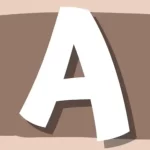
Oops! We can’t seem to find the page you’re looking for.
Possible reasons:
- The page might have been moved or deleted.
- The URL might be incorrect.
What can you do?
Search for what you’re looking for:
Or navigate to some of our key sections:
Still can’t find what you’re looking for?
Feel free to Contact Us or send us an email at Support@Artabys.com.
Hot Topics You Can’t Miss
Karita Coffey Native American Ceramics
Karita Coffey, born in 1947, is a Native American artist who creates ceramic sculptures that reference traditional indigenous objects. Karita Coffey is well-known for producing ceramic replicas and sculptures that reference traditional indigenous artifacts and designs. Karita supports Native artists by teaching ceramics in the state of New Mexico. My Insights As a Ceramic Artist…
Practical Tips for Engaging with Art; How To Look At Art
Let’s say you know nothing about art but would like to be able to engage with art and be able to look at art with an analytical eye. Well you have come to the right place. My Text Book Answer 1. Observe Without Rushing 2. Examine the Details 3. Consider the Composition 4. Understand the…
Harmonizing Visions: Mastering the Art of Blending Subjects
Blending your subject into the background color isn’t just a good technique; it’s a brilliant move when you really get the hang of it. This approach unlocks a whole spectrum of expressive potential that can seriously elevate the depth and emotion in your portraits. But here’s the kicker, it’s all about striking that perfect balance.…
Market Saturation – An influx of AI-generated Art
And yes, the featured image is AI art!!! AI’s churning out art like nobody’s business. It’s fast, it’s cheap, and let’s be honest, some of it’s not half bad. But there’s the rub, right? It’s flooding the market. Makes it a tad harder for folks like us, with paint under our nails and the smell…
Is AI Revolutionizing Art or Cheating
AI-generated art’s precision challenges traditional art’s value in embracing imperfections, potentially leading to a shift in aesthetic standards and a new appreciation for human flaws in art. Traditional art forms often embrace imperfections as part of the human touch, adding character and uniqueness to a piece. AI-generated art, on the other hand, is often created…
Unlock the Secret Behind Every Great Photo
Emotional resonance can elevate a piece from merely aesthetically pleasing to something profoundly moving. This resonance often arises from the artist’s own emotional connection to their work and their ability to translate these feelings into their medium, whether it’s a painting, sculpture, or digital art. This concept underscores the idea that the power of art…